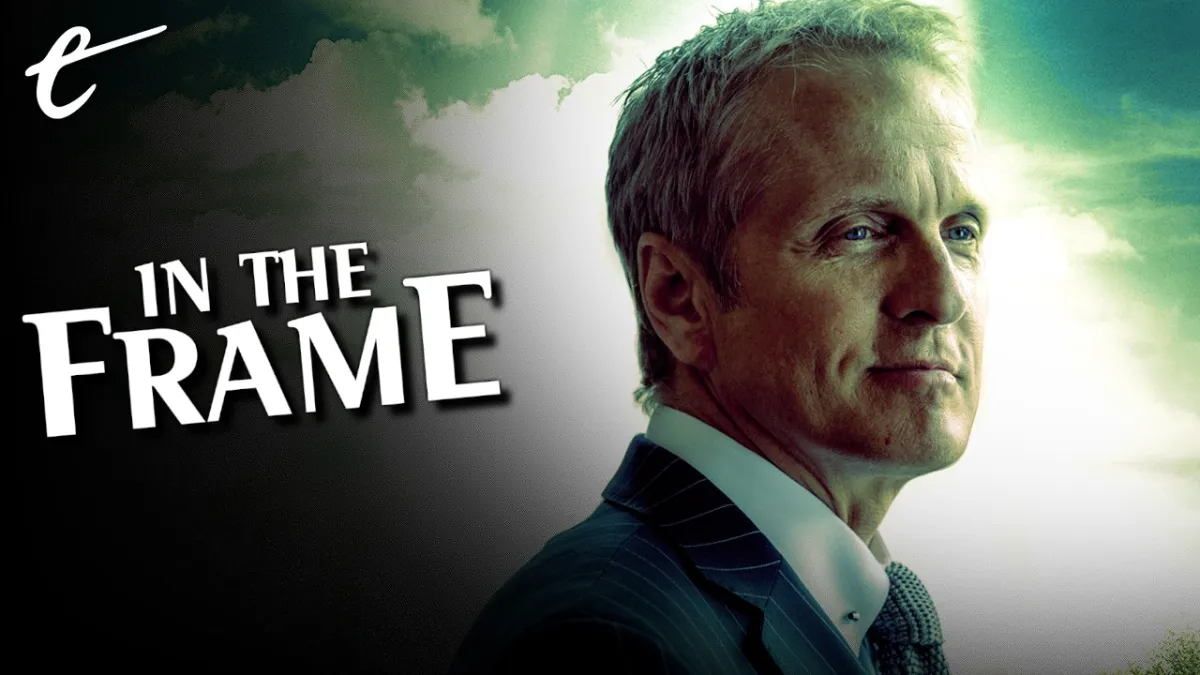This article contains spoilers for Better Call Saul season 6, episode 7, “Plan and Execution,” in its discussion of Howard Hamlin.
With “Plan and Execution,” the final season of Better Call Saul reaches its mid-season finale.
It is worth conceding, as writer and director Thomas Schnauz did on Twitter, that “Plan and Execution” was never intended as the lead-in to a six-week break between the two halves of the final season. However, when lead actor Bob Odenkirk had a heart attack while filming a scene with co-stars Rhea Seehorn and Patrick Fabian, production was halted. As a result, the release of the sixth season had to be staggered. (The scene in question was reportedly part of the next episode.)
Still, without all that context, “Plan and Execution” feels oddly fitting as a mid-season finale. The episode certainly ends on a dramatic cliffhanger, with Lalo Salamanca (Tony Dalton) casually murdering Howard Hamlin (Patrick Fabian) in the living room shared by Jimmy McGill (Bob Odenkirk) and Kim Wexler (Rhea Seehorn). It’s a dramatic plot and character beat, but it is also a seismic shift within the show itself. It is a moment that perhaps deserves to be allowed to stand for a few weeks.
The death of Howard Hamlin is a brutal and powerful piece of television, for a number of reasons. Most obviously, as with the death of Nacho Varga (Michael Mando) earlier in the season, it signals a steep escalation in stakes. As Better Call Saul enters its endgame, it is playing for all of the marbles. There’s an ambiguity to the fate of those characters that the audience hasn’t already seen on Breaking Bad, and the final season of Better Call Saul insists that not all of them get happy endings.
There is more to it than that. The ensemble on Better Call Saul is one of the finest casts in modern television, a combination of a skilled writers room working with a talented group of actors. Howard Hamlin is proof of that. Hamlin was introduced in the first season of Better Call Saul as something of an empty suit, to the point that an early punchline found Jimmy stealing Howard’s image as if to prove there was nothing underneath. However, he gradually became the show’s conscience.

Over the show’s six seasons, the production team on Better Call Saul has found surprising and compelling depths within characters who initially seemed like they might pose long-term problems for the show. The writers have been candid about the challenges that characters like Kim Wexler and Nacho Varga posed in that first season, when they had no real idea what to do with them. However, over time, these characters become multifaceted, compelling, and even tragic.
Howard followed a similar arc, evolving from an early foil for Jimmy into an engaging and sympathetic screen presence. He was something of a decoy antagonist in the show’s first season, with his antagonism towards Jimmy largely functioning to disguise the way that Jimmy’s brother and Howard’s partner Chuck McGill (Michael McKean) was the one responsible for sabotaging Jimmy’s legal career. In that first season, Howard was a proxy. He was a stand-in for the real threat.
What is particularly interesting about Howard is that he never really anchored a storyline on Better Call Saul. He was never the driving force or the audience identification character in the same way that Jimmy, Kim, Chuck, or Nacho was. Instead, Howard often existed caught in the orbit of other characters, whether doing Chuck’s dirty work or serving as the target of Kim’s righteous anger or provoking the worst in Jimmy. The audience largely saw Howard as other characters saw him.
Over the course of the show, the audience discovered a great deal about Howard Hamlin. Howard is largely defined by his deceased father, George, who co-founded the law firm Hamlin McGill. It seems that Howard’s paternal anxieties carried over to Chuck. Howard seemed to genuinely admire Jimmy, whom he called “Charlie Hustle.” He also guided his law firm through massive debt, tried to work his way through a divorce, and struggled with his depression.

All these details are revealed at the margins of Better Call Saul, rarely as the focus of the show’s attention. The firm’s financial concerns are mentioned in passing a few times and then quickly resolved off-screen. Howard is revealed to be going to therapy when it serves as a convenient opportunity for Jimmy to steal his car as part of a con. Howard’s wife, Cheryl (Sandrine Holt), appears for the first time in the episode before Howard is shot in the head.
Much like Nacho Varga played as a commentary on the tragic logic of prequels, Howard felt like a character occasionally crossing over from his own unseen spin-off: Howard’s End. One of the cleverer aspects of Cheryl’s complete absence from the earlier seasons (despite much speculation about Howard’s marital status) was that it offered a possible solution to the long-standing mystery of where Kim might be during the events of Breaking Bad: married to Jimmy, entirely off-screen.
Ignoring the clever use of the language of such television shows, Howard’s character was drawn in remarkably subtle terms. The audience was left with an impression of a life, rather than exposition. It is to the credit of Fabian as an actor and to the show’s writing staff that Howard still felt fully three-dimensional. Demonstrating the show’s knack for visual storytelling, a single scene between Howard and Cheryl reveals so much of who they both are. It’s heartbreaking.
Over the show’s run, Howard became an increasingly nuanced character, often in direct contrast to Jimmy. Howard worked through his feelings of guilt over Chuck’s suicide, while Jimmy refused to even acknowledge his feelings despite playing a much larger role in Chuck’s decline. Howard tried to make things right with Jimmy, in multiple and increasingly unique ways. Howard even reached out to Kim in concern about Jimmy’s increasingly erratic behavior.

As such, Howard became the show’s unlikely moral center. There is a small and charming moment in “Plan and Execution” where Howard pauses to explain to a young intern the importance of “centrifugal force” in preventing shaken soft-drink cans from exploding over. Given that the episode ends with Howard’s death and a strong push towards the inevitable brutality and chaos of Breaking Bad, that small character beat feels like a strong thematic statement about Howard as a person.
With this in mind, the death of Howard Hamlin carries a surprising amount of weight. Before Lalo arrives, Howard visits Kim and Jimmy to confront them about the elaborate long-form con that they pulled designed to humiliate and discredit him, an arc that played across the entire first half of the season. Howard gets to make some very valid points about how he doesn’t deserve such cruelty, as well as about how Kim and Jimmy’s treatment of him is a moral judgement on them rather than him.
Crucially, Howard’s central argument is that he will survive all that Jimmy and Kim have done to him, because he has lived through worse. “Just one more thing that ol’ Howard has to work through,” he muses. “But, yes, I will land on my feet. I will be okay. But you? Far from it. You two… you two are soulless. Jimmy, you can’t help yourself. Chuck knew it. You were born that way. But (Kim)? One of the smartest and most promising human beings I’ve ever known, and this is the life you choose?”
There is a cruel irony in all this, reflecting the stark moral universe of Breaking Bad and Better Call Saul. Howard would have probably lived through his disgrace. He may even have rebuilt his firm’s reputation. The audience watched him do something similar after Chuck’s breakdown. However, Howard isn’t doomed because of any choice that he made. He ends up as collateral damage from Jimmy’s flirtation with the cartel, killed by Lalo for being in the wrong place at the wrong time.

Howard’s death is presented as a moment of almost supernatural portent. As Howard arrives, Schnauz’s camera focuses on a flickering candle flame. The candle flickers again as Lalo lets himself in. It is as though two shadows and spirits have passed over the apartment that Kim and Jimmy share. Howard’s death is the death of the moral center of Better Call Saul, the show’s last tether to basic decency and compassion.
Indeed, Howard’s final scene is even bleaker than Nacho’s death earlier in the season. Nacho’s death was heavily foreshadowed, with Nacho himself accepting its inevitability. Nacho got to go out on his own terms, pulling the trigger himself in an act of agency that the show’s prequel nature often denied him. In contrast, the death of Howard Hamlin is a surprise. He was shot through the head by a complete stranger. He dies mid-sentence. “I think I’m in the middle of something; there’s really no need to —”
Howard’s death feels like an appropriate place to break the sixth season because it feels like a break within the show. With the death of Chuck and Jimmy renouncing the name McGill, Howard was one of the last ties to the show’s origins as a legal black comedy. Howard’s murder by Lalo, a character Jimmy references in his first appearance in Breaking Bad, suggests a show completely unmoored from its start point, now fully caught in the gravity well of Breaking Bad.
Maybe it wasn’t just Howard Hamlin that died in “Plans and Executions;” it was the quirky life once lived by Jimmy McGill. It has been completely subsumed by drug cartels and senseless violence. Jimmy McGill is dead, long live Saul Goodman.






Published: May 27, 2022 11:00 am